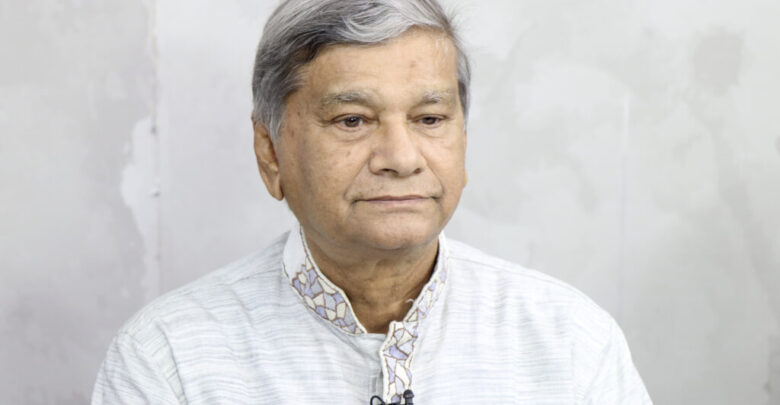

SILIGURI, India — Jannat-e Firdaus, a 30-year-old homemaker from the Noakhali district of Bangladesh, traveled to Vellore, a city in the southern Indian state of Tamil Nadu, in April for a malignant tumor operation.
She was accompanied by her husband Zubayat Kaiser on her trip to the Christian Medical College & Hospital, founded in 1900 by American missionary Ida S. Scudder.
While the surgery date was fixed within 15 days of the appointment, getting the appointment was a task considering the Covid scenario.
After the operation, the couple was waiting for post-surgery therapy when the deadly second wave of the Covid-19 hit India and reached its peak in April and May 2021 — causing many Indian states to call for partial or complete lockdown.
With money running out and the fear of the pandemic, the couple had no choice but to return to Bangladesh.

“Doctors at the hospital gave two months to start the post-surgery therapy for my wife,” Zubayat told Zenger News. “But it remains uncertain if we can travel to India again by the end of June.”
Jesminara, a 49-year-old breast cancer survivor from Chittagong, a city on the southeastern coast of Bangladesh, missed her annual medical check-up at the Tata Memorial Centre in Mumbai for the first time in the past 10 years.
“I was supposed to meet my oncologist in November last year,” the school teacher told Zenger News. “But due to the lockdown and travel restrictions, I had to cancel the trip. Let’s hope I can travel this year.”
Like Firdaus and Jesminara, there are many patients whose hopes were dashed when Bangladesh announced a travel ban to India on May 9. The ban is still in place.
Covid batters medical tourism in India
Most medical tourists coming to India are from South-East Asian, the Middle Eastern, African, and SAARC (South Asian Association of Regional Cooperation) countries, as per a 2019 report by the Federation of Indian Chambers of Commerce and Industry and global professional services network EY.
More than 50 percent of medical travelers coming to India, however, are from Bangladesh.
The report placed India fifth among 41 major medical tourism destinations. The rising costs of health care in developed countries such as the U.S. and the U.K. made India an affordable alternative, the report states. For comparison, if a heart bypass surgery in the U.S. costs $123,000, it would cost around $7,900 in India.
Delhi, Mumbai, Chennai, Bengaluru, Hyderabad, and Kolkata are the preferred destinations for medical tourists arriving in India, as per the report.
But these were also the places that saw the maximum impact of the pandemic in India.

With over 393,000 deaths, India is currently third in the list of countries with the most Covid fatalities. Although new figures indicate that positivity rates are coming down, many countries still have travel bans to and from India.
And, this is impacting the medical tourism market, which was projected to reach $9 billion in 2020 but was valued at around $5 billion last year. The global medical tourism market size was valued at $44.8 billion in 2019.
India’s foreign ministry on June 24 urged countries that had imposed travel bans to normalize travel.
Why Bangladeshis prefer India?
Bangladesh is the largest source of foreign tourists arriving in India. In 2019, over 2.57 million from the country visited India. Another report stated that in 2019, 15 percent of people from the country visiting India did so for medical needs.
Most patients visiting India for treatment complain about the flawed healthcare system back home.
“A few decades ago, healthcare facilities in Bangladesh were not up to the mark,” R.P. Asif Khan, an orthopedic surgeon from Chittagong, told Zenger News.
“Indian healthcare providers were able to fill this gap and successfully create a bond of trust with patients. As a result, people started trusting Indian healthcare in the 1990s. This trend still exists.”
“India has a better healthcare infrastructure and diagnosis facilities, especially when it comes to critical illnesses like cancer, heart, liver, and kidney-related ailments.”
Khan believes easy thoroughfare, similar culture, food habits, and language compatibility apart from free medical visas for up to six months helps.
“Our people go to India because we fail to live up to the satisfaction level of people who have availed medical services in India,” Dhaka-based Golam Dastageer Prince, a medical officer at the Directorate General of Health Services, told Zenger News.
“Patients and their families find doctors there more communicative and caring.”
Validating the point, Jesminara said medical staff in India “treat us with more empathy”.

“Though treatment costs a bit higher than in Bangladesh, we feel more heard. Indian doctors give us more counseling time than doctors in our country,” the school teacher told Zenger News.
Prince believes another reason for citizens going abroad for treatment is the gap in the doctor and population ratio in Bangladesh.
There were 0.58 physicians per 1,000 population in 2018 in Bangladesh. However, the World Health Organization recommends a ratio of 1:1,000. India was slightly below the mark, at 0.85 per 1,000.
Bangladeshis also travel to Thailand and Singapore for better treatment. In addition, people from higher income groups go to the U.S., the U.K., and other developed countries.
The Bangladesh healthcare landscape
Bangladesh’s economy is on an upward trajectory. In the past 10 years, the country has surpassed much bigger neighbors, including India, on several development metrics.
M.A. Manna, Bangladesh’ planning minister, recently announced that the country’s Gross Domestic Product per capita income — a measure of the money earned per person in a nation — surged to $2,227 over the past year, a growth of almost 9 percent.
The South Asian nation’s figures pipped India’s ($1,947) and Pakistan’s ($1,543).
“Bangladesh is performing consistently in GDP growth,” Tajul Islam, head professor of economics, Bangladesh University, told Zenger News.
“Since 2010, its growth rate had increased at an accelerated rate, except in 2013 when, though high, it was less than that in the previous year.”
However, Bangladesh’s budget allocation to the Ministry of Health and Family Welfare has been around 5 percent for years—lower than the South Asian and Lower Middle Income Country average of 5.3-5.4 percent of GDP.

But it improved to 5.14 percent of the 2020-21 fiscal year budget. The country’s finance ministry proposed to allocate Tk 29,247 crore ($3.45 billion) — an increase of 13.66 percent compared to the previous year.
It improved drastically to 6.6 percent of the 2021-22 fiscal year budget. The finance ministry proposed to allocate Tk 32,731 crore ($3.86 billion) for health. It also set aside Tk 10,000 crore ($1.18 billion) for Covid emergency requirements.
Bangladeshi health care experts say that facilities have been improving in recent years and, except for exceptional cases, there is no need for patients to seek treatment abroad.
But still, many are waiting for the Covid situation to come under control and the travel ban to be lifted to visit India for treatment. Some patients and their caregivers, meanwhile, are staying connected with doctors through telemedicine.
Mahbubul Haque, a professor from the University of Chittagong, told Zenger News his wife Fahmida Begum was undergoing cancer treatment at Apollo Hospital, Chennai.
“We had to rush back to our country in between the treatment process due to the virus scare in India, but my wife didn’t miss her treatment,” Haque said, explaining Fahmida is on oral chemotherapy suggested by her doctor via email.
“The doctors from Apollo Hospital are prompt with their replies,” Haque said.
“But health practitioners in Bangladesh should look into the matter seriously and try to rebuild the lost confidence in the patients and bring in better-equipped health infrastructure.”
(Edited by Amrita Das and Anindita Ghosh. Map by Urvashi Makwana)
The post India’s Covid Crisis Hits Bangladesh’s Patients appeared first on Zenger News.


